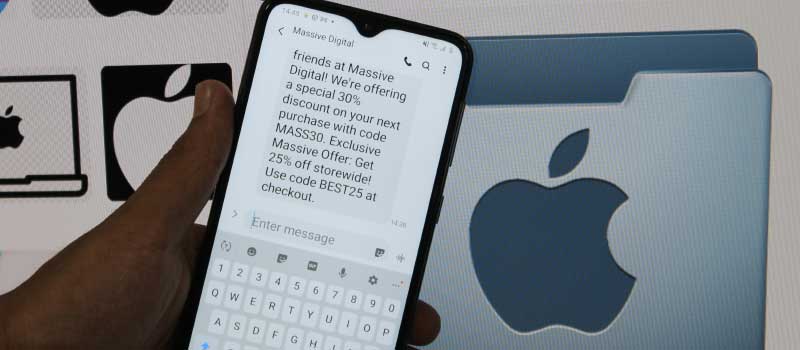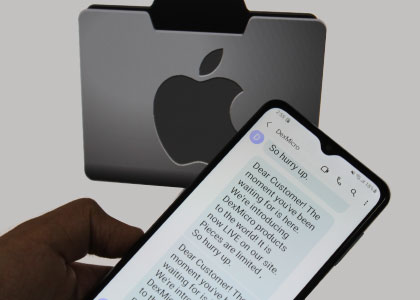Measure the Success of SMS Marketing Campaigns Using Mac SMS Software
SMS marketing is a type of marketing that involves sending promotional messages to customers via SMS. These messages can include promotional offers, discounts, product updates, or event invitations. SMS marketing is an effective way to reach out to customers and promote products or services. According to a survey by SMS Global, SMS messages have a 98% open rate, and 90% of these messages are read within 3 minutes of delivery.
SMS marketing campaigns can be run using Mac SMS software, which allows businesses to manage their campaigns and send messages to their customers.
-
Delivery Rate:
Delivery rate is the percentage of messages that were successfully delivered to the intended recipients. A high delivery rate indicates that the SMS messages are being sent to valid phone numbers and are reaching the target audience. Mac SMS software can provide delivery reports that show the delivery status of each message sent. A low delivery rate can indicate that the phone numbers in the database are outdated or invalid, or that the messages are being blocked by the recipient's mobile carrier.
-
Conversion Rate:
Conversion rate is the percentage of SMS messages that resulted in a desired action, such as a sale or sign-up. This metric indicates the effectiveness of the message content, call-to-action, and landing page. Mac SMS software can track the conversion rates of messages and provide reports on which messages resulted in conversions and which did not. A high conversion rate indicates that the message was persuasive and the landing page was effective in converting recipients into customers.
-
Click-Through Rate:
Click-through rate is the percentage of SMS messages that resulted in a click on a message link. This metric indicates the effectiveness of the call-to-action in the message and the landing page that the link directs to. Mac SMS software can track the click-through rates of messages and provide reports on which links were clicked and how many times. A high click-through rate indicates that the message was persuasive and the landing page was relevant to the recipient.
-
ROI:
ROI (Return on Investment) is the ratio of the revenue generated from the SMS marketing campaign to the cost of the campaign. This metric indicates the profitability of the campaign and whether it was worth the investment. Mac SMS software can track the cost of the campaign and the revenue generated and provide reports on the ROI of the campaign. A high ROI indicates that the campaign was profitable and worth the investment.
-
Revenue:
Revenue is the amount of money generated from the SMS marketing campaign. This metric is the ultimate measure of the success of the campaign. Mac SMS software can track the revenue generated from the campaign and provide reports on which messages resulted in sales and how much revenue was generated. A high revenue indicates that the campaign was effective in generating sales and increasing revenue.
-
Open Rate:
Open rate is the percentage of SMS messages that were opened by the recipient. This metric is similar to email open rates and indicates the effectiveness of the subject line and content of the message. Mac SMS software can track the open rates and provide reports on which messages were opened and which were not. A high open rate indicates that the message content was engaging and relevant to the recipient.
Regulations for Using SMS Marketing
SMS marketing is a powerful tool for businesses to reach out to customers and promote products or services. However, there are regulations and guidelines that businesses must follow when using SMS marketing to avoid legal issues and protect the privacy of customers. In this article, we will discuss the regulations and guidelines for using Mac SMS software.
-
► TCPA:
The Telephone Consumer Protection Act (TCPA) is a federal law that regulates telemarketing calls and SMS messages. Under the TCPA, businesses must obtain the prior express written consent of the recipient before sending SMS messages for marketing purposes. The consent must be voluntary, clear, and conspicuous, and must include a clear opt-out mechanism. Businesses must also honor opt-out requests promptly and must not send messages to phone numbers on the National Do Not Call Registry.
-
► CTIA:
The Cellular Telecommunications Industry Association (CTIA) is a trade organization that represents the wireless communications industry. The CTIA has developed a set of guidelines for businesses to follow when using SMS marketing. These guidelines include obtaining consent from recipients, providing clear opt-out instructions, and avoiding misleading or deceptive content in SMS messages.
-
► FCC:
The Federal Communications Commission (FCC) is a government agency that regulates the use of communications technologies. The FCC has rules regarding SMS marketing that require businesses to obtain prior express written consent from recipients before sending SMS messages for marketing purposes. The FCC also prohibits the use of automatic telephone dialing systems to send unsolicited SMS messages.
Guidelines for Using SMS Marketing

-
Obtain Consent: As mentioned above, businesses must obtain the prior express written consent of the recipient before sending SMS messages for marketing purposes. The consent must be voluntary, clear, and conspicuous, and must include a clear opt-out mechanism. Businesses can obtain consent through various means, such as web forms, email, or text messages.
-
Provide Clear Opt-Out Instructions: Businesses must provide clear opt-out instructions in SMS messages to allow recipients to easily unsubscribe from future messages. The opt-out instructions must be clear and easy to understand, and must include a simple mechanism for recipients to opt out, such as replying "STOP" to the message.
-
Avoid Misleading or Deceptive Content: Businesses must avoid using misleading or deceptive content in SMS messages. The content of the message must be accurate and not misleading, and must not make false or unsubstantiated claims. Businesses must also clearly identify themselves as the sender of the message and provide contact information for the recipient to reach them.
-
Limit the Frequency of Messages: Businesses must limit the frequency of SMS messages to avoid spamming recipients. Sending too many messages can annoy recipients and lead to opt-outs or complaints. Businesses should determine a reasonable frequency for sending messages and stick to that schedule.
-
Keep Messages Relevant and Valuable: Businesses must keep SMS messages relevant and valuable to recipients. Sending irrelevant or low-value messages can lead to opt-outs or complaints. Businesses should personalize messages and tailor them to the interests and needs of the recipient.
-
Protect Customer Data: Businesses must protect the privacy of customer data and comply with data protection laws, such as the General Data Protection Regulation (GDPR) and the California Consumer Privacy Act (CCPA). Businesses must obtain consent from customers to collect and use their personal data, and must ensure that the data is kept secure and confidential.
Conclusion:
SMS marketing is a powerful tool for businesses to reach out to customers and promote products or services. However, businesses must comply with regulations and guidelines to avoid legal issues and protect the privacy of customers. When using Mac SMS software, businesses must obtain consent from recipients, provide clear opt-out instructions, avoid misleading or deceptive content, limit the frequency of messages, keep messages relevant and valuable, and protect customer data.
Troubleshoot Common Issues With Mac SMS Software
Mac SMS software is designed to allow users to send and receive text messages on their Mac computer. However, like any software, it can experience issues and errors that may impede its functionality. In this article, we will discuss common issues with Mac SMS software and provide troubleshooting tips to help you resolve them.
-
Unable to Send Messages:
If you are unable to send messages, the first thing to check is your internet connection. Make sure that you are connected to the internet and that your Wi-Fi or cellular connection is strong. You may also want to check if your carrier supports SMS messaging on your Mac.
Another common issue is if the recipients' phone number is incorrect. Ensure that the phone number you are sending to is accurate and that there are no typos. You can also try restarting your Mac and iPhone to see if this resolves the issue.
-
iMessage Not Working:
If you are experiencing issues with iMessage, the first step is to ensure that iMessage is enabled on both your iPhone and Mac. Go to Settings > Messages on your iPhone and ensure that iMessage is turned on. On your Mac, open Messages and go to Preferences > Accounts and ensure that your Apple ID is selected for iMessage.
You may also want to check if your Wi-Fi network is working correctly, as iMessage requires a strong internet connection. If all else fails, try signing out of iMessage on both your iPhone and Mac and then signing back in.
-
Messages Not Syncing:
If your messages are not syncing between your Mac and iPhone, first, make sure that you have enabled Messages in iCloud on both devices. This will allow your messages to sync between your devices seamlessly.
You may also want to ensure that you are using the same Apple ID on both devices. If you are still experiencing issues, try signing out and back into iCloud on both devices.
-
Messages App Crashing:
If your Messages app is crashing, the first step is to restart your Mac. If this doesn't work, try clearing the Messages cache by going to the Finder, selecting "Go" in the menu bar, and then selecting "Go to Folder." Type "~/Library/Caches" and press Enter.
Find the folder named "com.apple.Messages" and delete it. Restart your Mac and try opening the Messages app again.
-
Messages Not Sending from iPhone:
If you are having trouble sending messages from your iPhone, first, check your cellular network connection. If you have a weak signal or are in an area with poor reception, you may experience issues sending messages.
Another issue could be that your iPhone is not updated to the latest software version. Go to Settings > General > Software Update to check if there is an update available for your iPhone.
-
SMS Messages Not Showing Up:
If your SMS messages are not showing up on your Mac, first, ensure that you have enabled SMS forwarding on your iPhone. Go to Settings > Messages > Text Message Forwarding and ensure that your Mac is selected.
You may also want to check if your Mac is running the latest software version. Go to the Apple menu > About This Mac > Software Update to check for any available updates.
